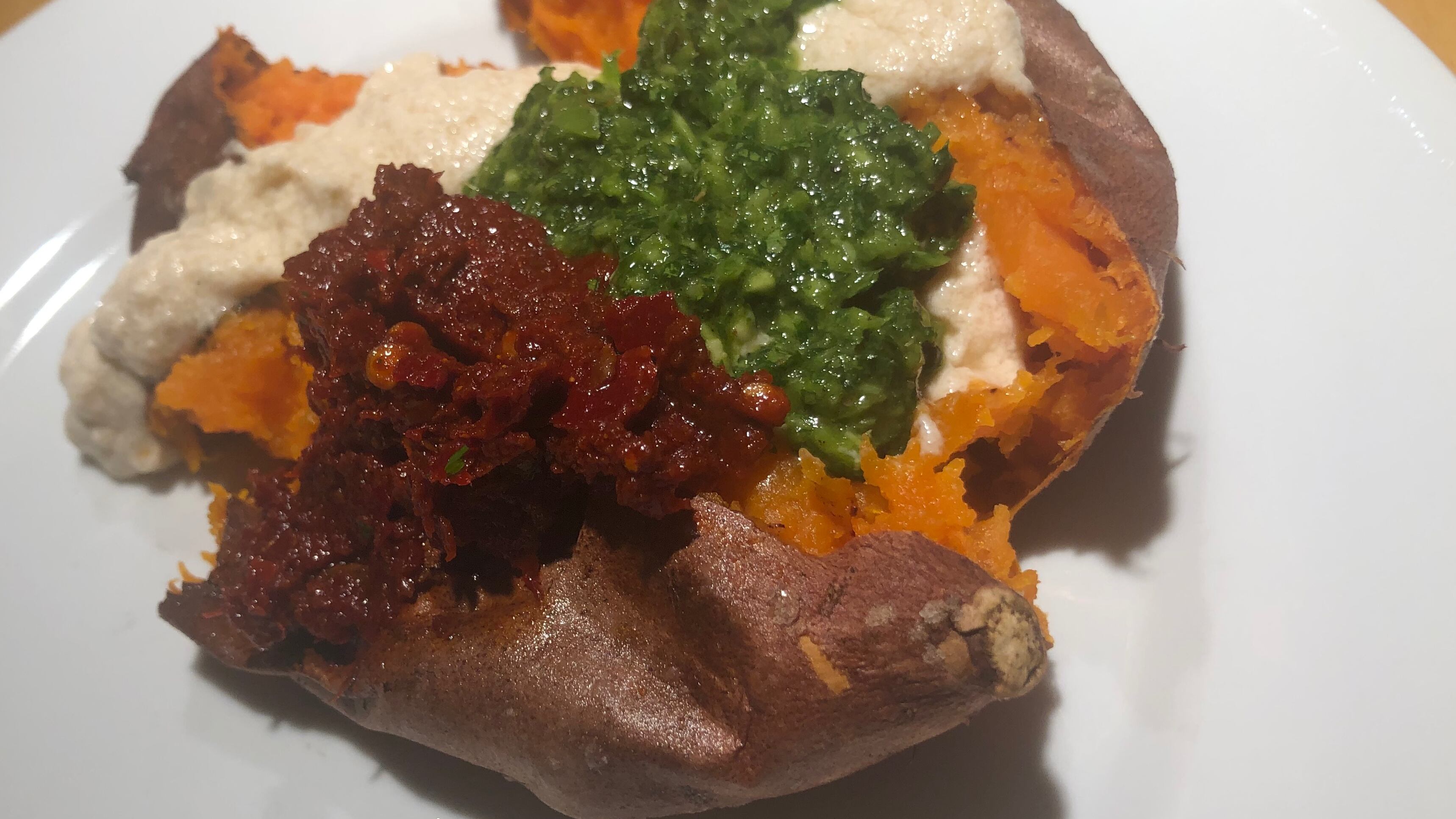Jim Dixon wrote about food for WW for more than 20 years, but these days most of his time is spent at his olive oil-focused specialty food business Wellspent Market. Jim’s always loved to eat, and he encourages his customers to cook by sending them recipes every week through his newsletter. We’re happy to have him back creating some special dishes just for WW readers.
Until I read Ralph Ellison’s Invisible Man, I only knew sweet potatoes as the candied yams* we ate once a year at Thanksgiving. But Ellison’s unnamed narrator, a Black man in 1940s New York who’s avoided the foods he ate growing up in the South because of their racist baggage, impulsively buys a roasted sweet potato from a street vendor. The first bite takes him back to his childhood, and while the passage serves as a metaphor for the alienated narrator embracing his true self, it also made me want to eat a roasted sweet potato.
In the decades since I’ve roasted many, and I love how the heat of the oven transforms the starchy tuber. The interior becomes soft and delicious while the skin gets dark and a little crispy as the sugary juices caramelize on the bottom of the pan. A roasted sweet potato doesn’t need much more than a little butter and salt to be incredibly tasty.
But during a recent visit to New York, I impulsively ordered one at Miznon, the international fast food mini chain founded by Tel Aviv chef Eyal Shani. It’s mostly known for its soft, pillowy pita, but also offers vegetables like a whole roasted cauliflower. Between bites of chicken liver wrapped in that pita, I dabbed the sweet potato in tahini and zhug, the spicy green sauce from Yemen. My revelation might not have been as profound as Ellison’s invisible man, but it made enough of an impression that I decided to make the same thing at home.
I took it a step further with the same combo of Middle Eastern-style sauces I serve alongside grilled vegetables all summer long: a simple tahini yogurt, a version of zhug, and the Tunisian chile paste called harissa. I make the tahini yogurt sauce and zhug, but buy prepared harissa—though store-bought versions of all three, or even vaguely similar sauces, could be substituted (lately I’ve been using locally made Hot Mama’s Chiles Toreados instead of the zhug, and anything from Sriracha to Crystal Hot Sauce can stand in for the harissa).
*The orange-fleshed sweet potatoes that become soft when cooked were called “yams” by enslaved Africans because they reminded them of the true yams, a different root, that they ate before they were abducted and brought to America.
Roasted Sweet Potatoes With Three Sauces
Orange-fleshed sweet potatoes (usually labeled Jewel or Garnet), one per person
Extra-virgin olive oil
Kosher-style sea salt
Tahini-yogurt sauce, spicy green sauce and harissa to serve
Wash the sweet potatoes. Use a skillet or sheet pan large enough to hold them all, and, for an easier clean up afterwards, cut a sheet of parchment paper to cover the bottom. Drizzle a little olive oil over the sweet potatoes, use your hands to rub it all over their skin, arrange them on the parchment, and sprinkle lightly with salt.
Long roasting breaks down the sweet potatoes’ starch into a sugar called maltose, so cook them at 400 degrees for at least an hour; you want the insides soft, the skins dark, and caramelized juices leaking out. Remove from the oven and let cool slightly.
To serve, lightly smash each sweet potato to split the skin. Spoon some of each sauce over the top.
